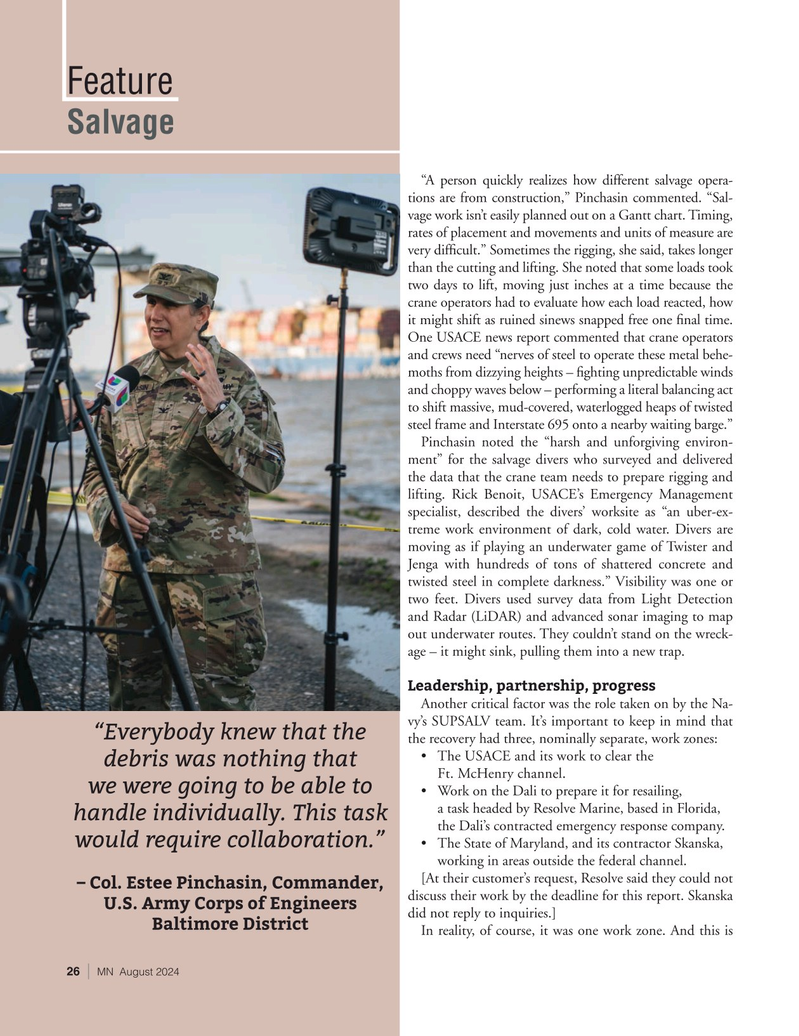
Page 26: of Marine News Magazine (August 2024)
Read this page in Pdf, Flash or Html5 edition of August 2024 Marine News Magazine
Feature
Salvage “A person quickly realizes how different salvage opera- tions are from construction,” Pinchasin commented. “Sal- vage work isn’t easily planned out on a Gantt chart. Timing, rates of placement and movements and units of measure are very dif? cult.” Sometimes the rigging, she said, takes longer than the cutting and lifting. She noted that some loads took two days to lift, moving just inches at a time because the crane operators had to evaluate how each load reacted, how it might shift as ruined sinews snapped free one ? nal time.
One USACE news report commented that crane operators and crews need “nerves of steel to operate these metal behe- moths from dizzying heights – ? ghting unpredictable winds and choppy waves below – performing a literal balancing act to shift massive, mud-covered, waterlogged heaps of twisted steel frame and Interstate 695 onto a nearby waiting barge.”
Pinchasin noted the “harsh and unforgiving environ- ment” for the salvage divers who surveyed and delivered the data that the crane team needs to prepare rigging and lifting. Rick Benoit, USACE’s Emergency Management specialist, described the divers’ worksite as “an uber-ex- treme work environment of dark, cold water. Divers are moving as if playing an underwater game of Twister and
Jenga with hundreds of tons of shattered concrete and twisted steel in complete darkness.” Visibility was one or two feet. Divers used survey data from Light Detection and Radar (LiDAR) and advanced sonar imaging to map out underwater routes. They couldn’t stand on the wreck- age – it might sink, pulling them into a new trap.
Leadership, partnership, progress
Another critical factor was the role taken on by the Na- vy’s SUPSALV team. It’s important to keep in mind that “Everybody knew that the the recovery had three, nominally separate, work zones: • The USACE and its work to clear the debris was nothing that Ft. McHenry channel.
we were going to be able to • Work on the Dali to prepare it for resailing, a task headed by Resolve Marine, based in Florida, handle individually. This task the Dali’s contracted emergency response company.
would require collaboration.” • The State of Maryland, and its contractor Skanska, working in areas outside the federal channel.
[At their customer’s request, Resolve said they could not – Col. Estee Pinchasin, Commander, discuss their work by the deadline for this report. Skanska
U.S. Army Corps of Engineers did not reply to inquiries.]
Baltimore District
In reality, of course, it was one work zone. And this is 26 | MN August 2024

 25
25

 27
27
